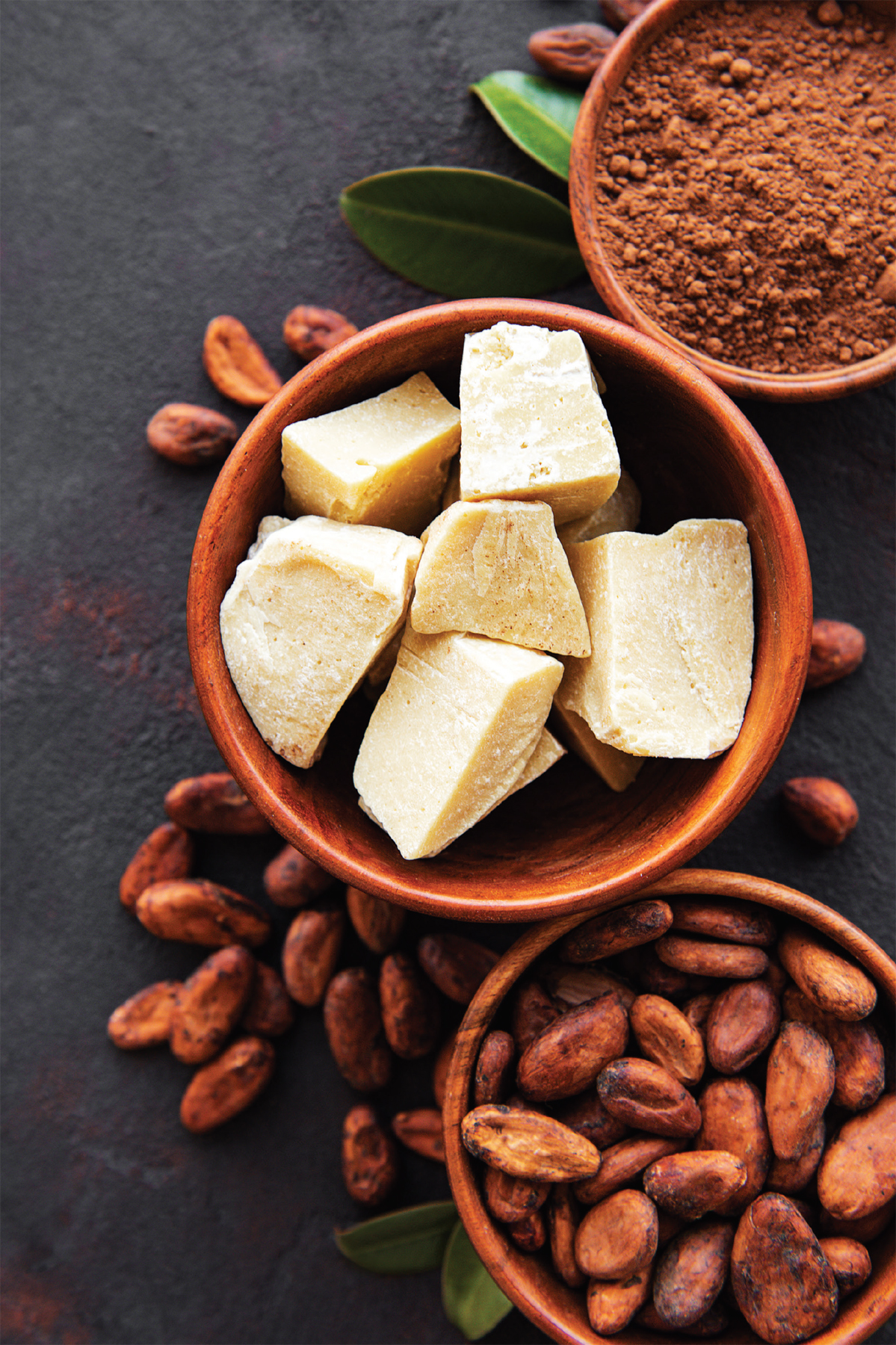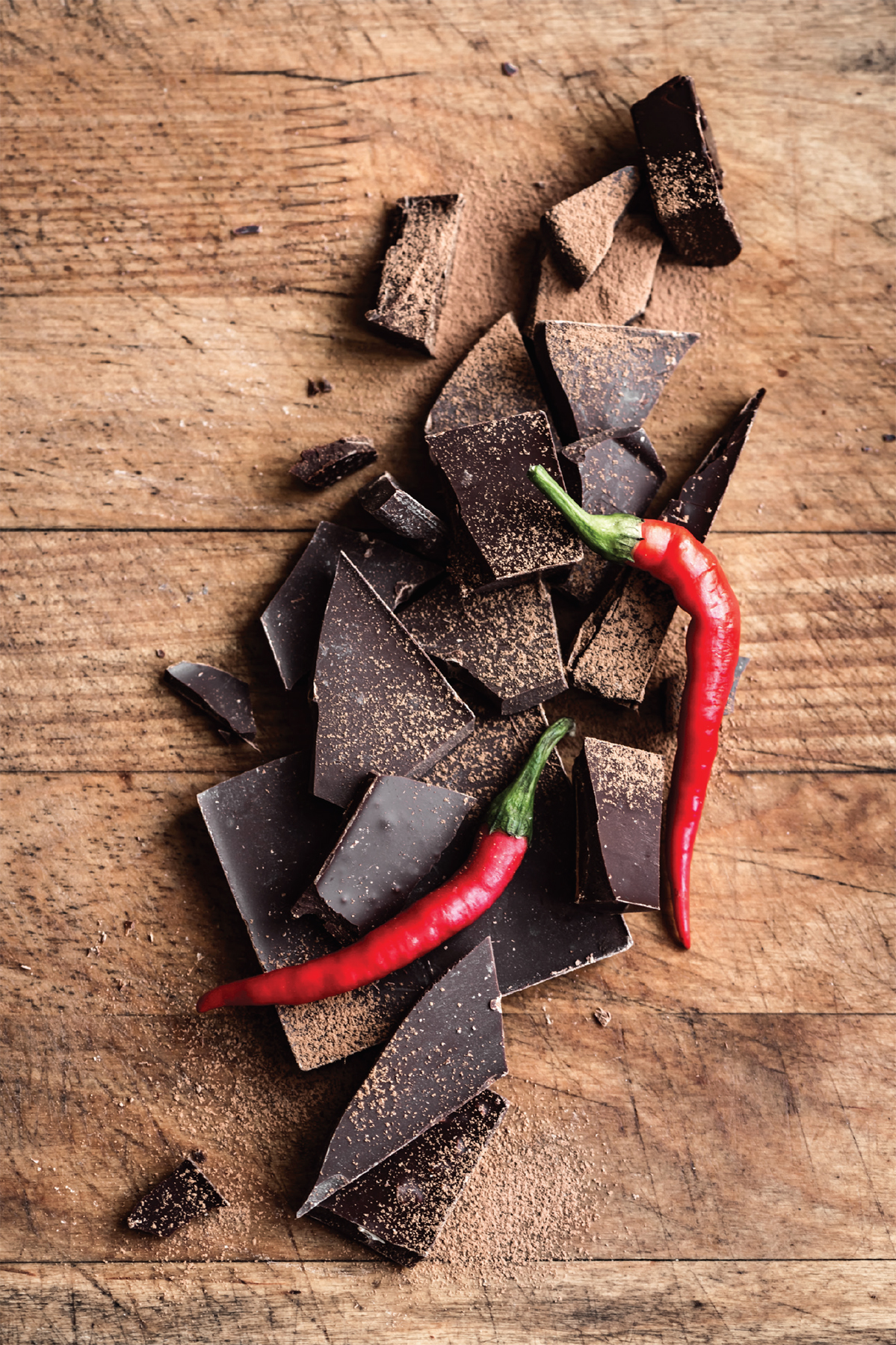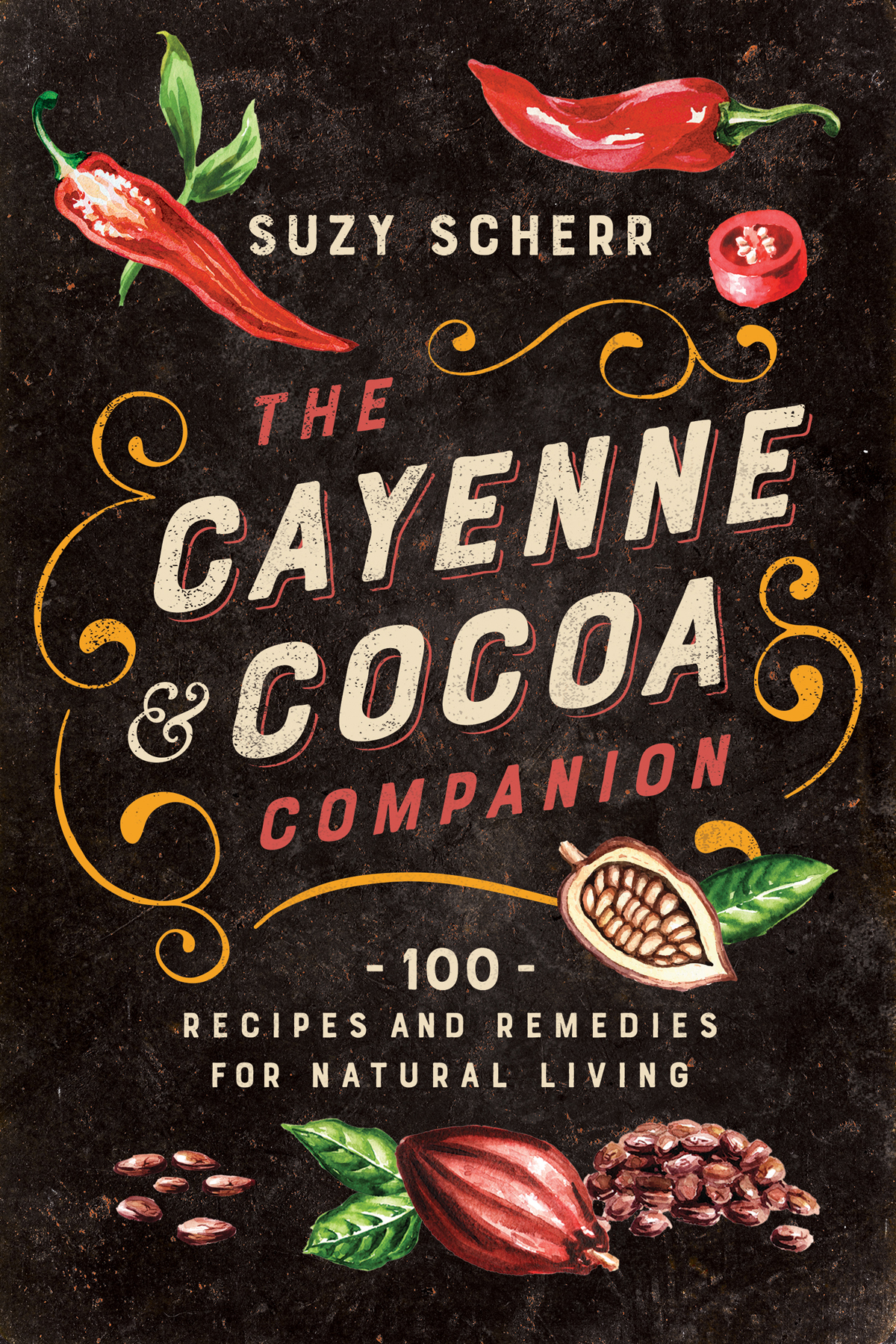Contents
Guide
Page List
THE CAYENNE
& COCOA
COMPANION
100 RECIPES AND REMEDIES
FOR NATURAL LIVING
SUZY SCHERR

For M and I, my sweet and spicy girls
CONTENTS
If you are going to follow links, please bookmark your page before linking.
For as long as I can remember, Ive loved cooking. Ask me why and my knee-jerk response is usually to say something like I love to take care of people or Its how I express my creativity. And while those things are absolutely trueand in that orderI also love the unpredictability of it. The element of surprise.
Say, for example, Im making toast with butter. Its something Ive made a zillion times and even though Im certain I know what it will taste like when its done, its never exactly the same as the last time I made it. Perhaps Ill toast the bread a bit longer and it will be browner, or Ill use more butter than the last time, or maybe Ill slice the bread just a little bit thicker. So, even when Im cooking something unbelievably familiarso familiar its basically ingrained in meits also new. Every single time. And thats with just the simplest of ingredients! Yes, Im nerding out over toast with butter. Ill cop to that. But its a perfect example of how you never know what little sparks will fly when youre in the kitchen. If simple, straightforward ingredients that we know work together can bring surprises, then what about combining foods that seem like they just wont work and then discovering that theyre pure magic? Pretty great.
Cayenne and cocoa. Spicy and sweet. (Actually, cocoa is not sweet at all, but we mostly associate it with sweet, dont we? Much more on this later.) Ostensibly divergent flavors that are not only great friends, but have quite a bit in common. From their origins to their health benefits, cayenne and cocoa are a lot alike in what they can do for our bodies, our homes, and our palates.

In cooking, theyre much more indispensable than you might think, as theyre both great for adding complexity, depth, and a good bit of the unexpected in everything from drinks to desserts and all courses in between. And while the kitchen is where my love for these two mighty ingredients emanates, it doesnt end there.
Together and apart, cayenne and cocoa show up all over my everyday life (and sometimes all over my kitchen floor, tooits a good thing Ive written books about apple cider vinegar and baking soda for a boatload of natural cleaning solutions!). Im busy, like you. Im a mom and wife and a chef and an author. My life, much like the cayenne and cocoa on my kitchen floor, is colorful, messy, and far from glamorous. And, because I much prefer to focus on the joy (having long ago given up on the possibility of perfection), Im forever in search of ingredients I can use to easily improve and maintain my familys health, quickly beautify our home, and magically make my skin glow, my hair shine, and maybe even fake a tan. Cayenne and cocoa can do all that andto be honestthey help preserve my sanity.
Both ingredients can multitask like a... well, like a busy mom! Cayenneantimicrobial, antifungal, anti-inflammatory, and an excellent stimulantis great for skin and hair, for use in wellness products that contribute to looking and feeling good, and for keeping your home and yard in tip-top shape. Its full of vitamins, phytonutrients, metabolism-boosting properties, and pain-fighting chemicals. Plus, it can help with conditions ranging from high blood pressure and stomach ulcers (yes, really!) to back pain and psoriasisand it may even help our bodies fight off certain cancersalthough this research is still ongoing, so best to take that info with a grain of salt. (Spicy margaritas, anyone?)
Cocoa, meanwhile, has been credited with everything from reduced systemic inflammation, increased blood flow, lower blood pressure, and improved cholesterol and blood sugar levels. Its especially high in flavanols, which have potent antioxidant and anti-inflammatory effects and, as such, may lower the risk of heart attack and stroke. Research also suggests it may help prevent age-related brain degeneration, such as in Alzheimers disease.
I use cocoa to boost my mood, support my immunity, craft with my kids, and scent my home. I use it as part of my daily skin- and hair-care regimen and have even been known to literally take a bath in it. What chocolate lover hasnt had that fantasy?
This book will walk you through many of the easy and accessible ways in which I use cayenne and cocoa nearly every single day to take care of myself and my family. Together, well use both to awaken our senses, enhance our homes, feel better, and turn our everyday cooking into something sweet, spicy, unexpected, andyesperhaps even a bit messy. Just like life.



What Is It?
The cayenne pepper is a thin, red chili pepper that grows 2 to 5 inches long. A native of South America, it belongs to the capsicum annuum family of plants and is a relative of jalapeos, bell peppers, and New Mexico chili peppers. Typically found in the spice aisle of the grocery store as a finely ground powder, cayenne is one of the main ingredients in Tabasco sauce, and is commonly used in a wide range of world cuisines, such as Mexican, Creole, Indian, Thai, Chinese, Korean, and more. Cayenne peppers are considered somewhat spicy, ranging from 30,000 to 50,000 Scoville heat units. (The Scoville Scale measures the pungency of chili peppers and is based on the concentration of capsaicinoidsthe chemical that makes chili peppers spicy.)
A Brief History of Cayenne
Cayenne, while popular today, is not exactly a hot new thing (get it?). It is thought to have been a part of the human diet since about 7,500 BCE and is one of the oldest cultivated crops in the Americas. The word cayenne is thought to be a derivation of the word kyynha, which meant capsicum in the ancient Tupi language once spoken in Brazil, although over time cayenne peppers have also been known as Birds Beak, Chilliepin, and Guinea Pepper. Originally grown in Central and South America, indigenous populations used cayenne as a food and as a medicine for ailments ranging from stomachaches, cramping, and gas to disorders of the circulatory system.
Despite its far-reaching history, chili pepperscayenne among themwere completely unknown to most of the world until Christopher Columbus made his way to the New World in the 15th century. As the story goes, King Ferdinand and Queen Isabella of Spain ordered Columbus to bring back gold and black pepper. He found neither. But as he ate the dishes the natives served him, he experienced the heat that chili peppers produce and, apparently, thought to himself, same same. Of course, black pepper and chili pepper are botanically unrelated (black pepper comes from a berry-producing bush), but Columbus brought some back to Ferdinand and Isabella with the suggestion that they be used as an inexpensive replacement for black pepper. They were sold.











